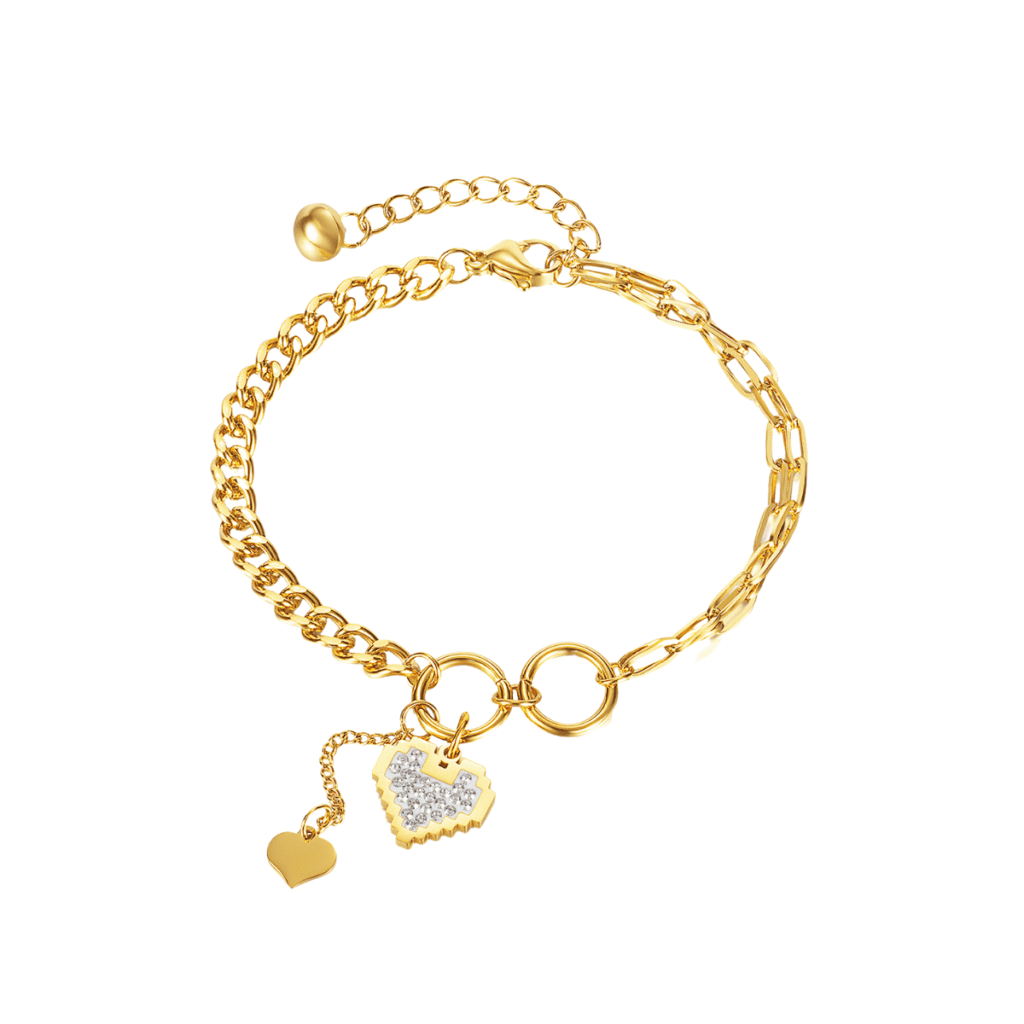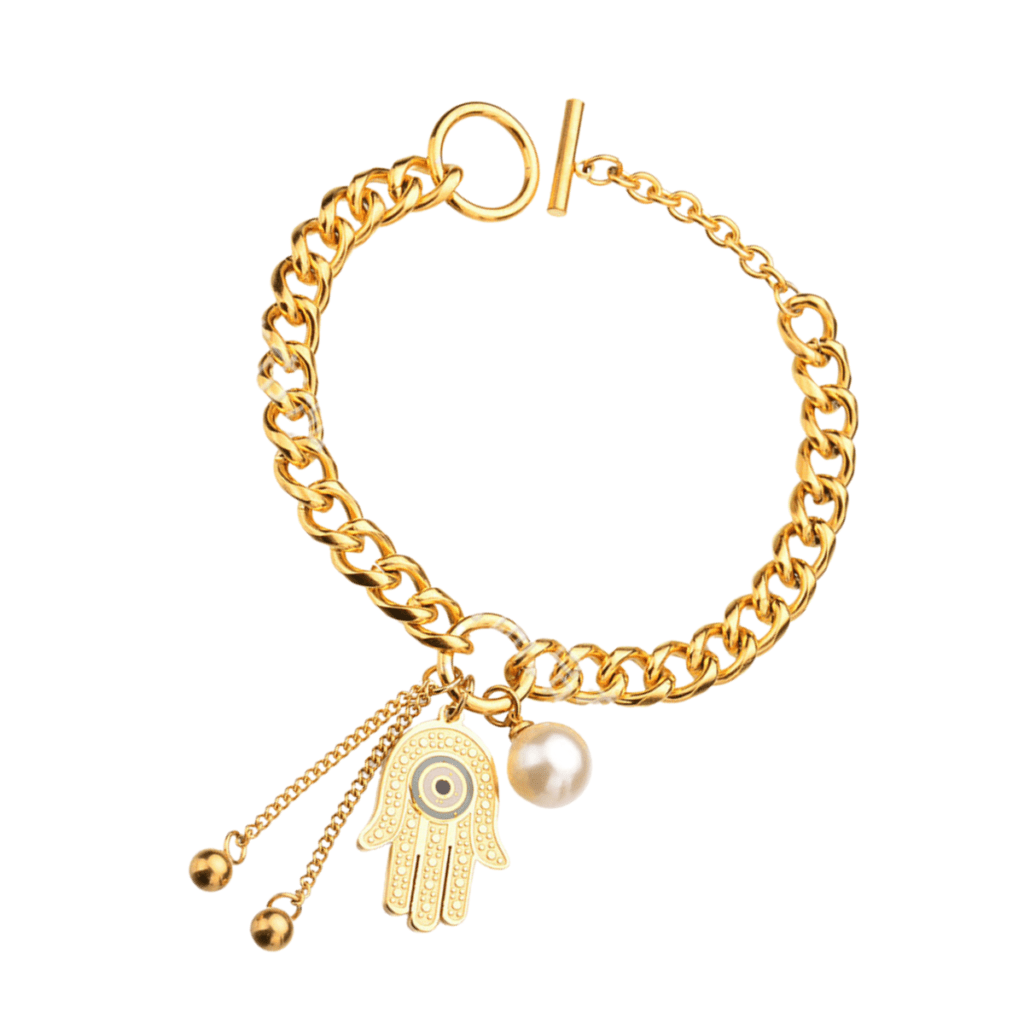GOLD-PLATED JEWELLERY – EVERYTHING YOU WANTED TO KNOW


GOLD PLATED JEWELLERY
It is easy to get confused with the different golds used in jewellery today. Apart from the different carats like 9-carat, 14-carat, 18-carat and 24-carat, there is also gold-plated, gold-filled and gold-vermeil used in jewellery.
In this blog we’ll attempt to cover all you wanted to know about gold-plating, called gold electro-plating, and answer your questions about whether gold-plated jewellery really is up to scratch.
- If something is gold plated, does this mean it is real gold or is it fake?
- Is gold plated jewellery worthless? Will gold-plated jewellery irritate your skin?
- Does gold-plating last?
After going through a very un-fashionable phase, where gold-plating was looked upon as being ‘cheap’ jewellery, much better plating – meaning giving incredible coverage and being much longer-lasting – gold plated jewellery has actually had a fantastic revival, particularly with designer jewellery brands. It offers a fabulous alternative to solid gold without the hefty price tag.
Read on, and we’ll cover all this and more. ,


WHAT IS GOLD PLATED JEWELLERY?
Gold Plating is a process whereby a layer of gold is laid, or plated, over the top of another metal.
The thickness of the plating can vary, as can the carat of the gold used.
Metals that can be plated include base metal (the cheapest), copper, or silver. Gold-plating on silver is called Silver-Gilt or Gold Vermeil.
They use gold plating in the electronics industry as it’s an excellent conductor but it is also used extensively in the jewellery industry and this is what we talking about in this blog.
WHY IS GOLD PLATED?
The obvious answer to the advantages to plating something in gold, is to help keep the cost down. Gold is a very expensive precious metal, particularly the higher the carat gold (which has a richer, more yellow appearance).
Having a piece of jewellery made in a cheaper metal but plated in gold is so much more cost-effective than it being made in solid gold.
A higher-carat gold, like 18-carat, can be used with gold plated jewellery to give the item a richer, deeper lustre than even a solid 9-carat gold piece.
People who love to change their jewellery regularly can really mix it up with gold-plated pieces without breaking the bank.
Gold-plated jewellery is great to take on holiday if you are worried about mislaying your jewellery.
More designer jewellery brands are using gold plated designs, or mixing gold and silver pieces for an on-trend look.


HOW DID GOLD PLATING START?
A QUICK HISTORY OF GOLD PLATE
Metal plating has been around from as long ago as 200-500BC, where foils of gold were hammered around the outside of other metals.
This then developed into gold leaf, and a process of brushing gold (mixed with mercury!) onto surfaces. The item was then heated so that the mercury would evaporate and leave the gold behind.
It was only in the Industrial Revolution when the more modern method of plating metals was developed, called electroplating.
ELECTRO-PLATING
Alessandro Volta invented an electric battery in 1800 and immediately scientists started experimenting with this new technology. A year or so later William Cruikshank managed to deposit some metal deposits onto a Volta electrochemical battery.
This was then developed further and, in 1805, a chemist called Luigi Brugnatelli coated some silver medals with gold using a technique involving a battery and a gold solution.
Suddenly the rich wanted to display their wealth by having items coated in gold.
If you would like to read further on the history of electro-plating this blog is an excellent and thorough resource.
THE THICKNESS OF THE GOLD USED
The thickness of the layer of gold used in the plating jewellery is measured by “microns”. The more microns thick the plating is, the longer the plating will last before it wears off.
Gold Plating less than 0.5 microns thick is known as Gold Flashed and was used in cheap, costume jewellery.
Gold Plating greater than 0.5 microns thick is known as gold plate.
Gold Plating greater than 2.5 microns thick is called Gold Vermeil. This is the best gold plating and, to be called gold vermeil, the gold must be plated on silver.




WHAT MATERIALS CAN BE GOLD PLATED?
Gold plating can be carried out on any metal. Most often it is base metals, copper, and silver that are plated with gold.
Indeed, modern processes mean almost any material can be gold-plated now, even plastics.
Gold has a good “adhesion” to silver and so lasts longer on silver than it does on base metals. Consequently, some base metal items are plated with silver (or rhodium) before being plated with gold.
Gold plating lasts longer on gold than on silver. Therefore plating an item with a lower carat gold, for example, 14-carat gold before plating it with 18-carat gold will produce a longer-lasting finish than gold plated on silver.
WHAT IS THE GOLD PLATING PROCESS?
Modern gold plating is done by firstly and, most importantly, cleansing the surface of the item.
- Any oils or debris must be removed or else the gold won’t adhere to the metal underneath properly and any surface debris can contaminate the tank. Several methods are used which can include chemicals, stripping, blasting and polishing.
- Once the surface of the item has been stripped, cleaning must take place – this can be in an ultrasonic machine and rinsed.
- A thin layer of rhodium or nickel is applied to any base metals or copper (and sometimes even silver). This is called a ‘Flash’ layer. This prevents any base metals in the underlying piece contaminating the tank and also to prevent the metal underneath later leaching through the gold plating and tarnishing.
- The piece is then submerged into a plating solution which will attract ions of gold. The tank contains positively charged gold metal ions. The jewellery which is being plated is hung from a negatively charged cathode bar which means the jewellery then becomes negatively charged. As the jewellery is lowered into the tank, an electric current is passed through the liquid and the negatively charged jewellery attracts the positively charged gold ions, causing the gold to plate the piece of jewellery.The longer the time in the tank, the thicker the layer of gold.
- The pieces are rinsed and hung to dry.
PROBLEMS WITH GOLD PLATING.
The metals underneath the gold can sometimes “leach” through the gold and cause tarnishing. This can happen with gold-plated silver over time but in particular with gold-plated copper or gold plated on to base metal.
Whilst this will take some time to do (see below on care tips) this can, and often is, counteracted by coating the metal underneath with rhodium or nickel which acts as a seal, before the gold is plated.
Gold plating can wear off over time and with poor care.
Some cheap, gold plated costume jewellery is gold “flashed” ie it has a very thin layer of gold. This can quickly wear off and the metal underneath (which could containe nickel) can then irritate your skin.
IS GOLD PLATED JEWELLERY WORTH ANYTHING?
Obviously, there is far less gold in a gold plated piece of jewellery than there is a solid gold piece. It is not worth stripping the gold from a piece of jewellery, even if the piece is plated with 18 or 24-carat gold. Doing so would out-weigh the cost of the gold retrieved.
Does Gold-Plating On Jewellery Last?
This can depend on many factors. Most importantly, it will depend on how thick the gold plating is.
Many good modern jewellery designers will plate their jewellery 2.5 microns thick which will last, and wear, very well.
It will also depend on how well the piece of jewellery is looked after (see our care tips below)
Jewellery which has more friction will wear quicker. Consequently, rings often will wear quicker than necklaces and pendants, and earring even less so.
WHAT IF MY GOLD PLATED JEWELLERY HAS TARNISHED?
If your gold plated necklace, bracelet or ring has tarnished, you can always get it re-plated. This is not as expensive as you would image and can be carried out at any good jewellery repair workshop.
Can I Get My Jewellery Re-Plated?
Yes, you can and it’s not as expensive as you would think.
But most jewellers won’t take anything to be gold-plated. The reason for this is that the metal underneath the gold plating may contaminate the tank where the electro-plating is carried out. Hence, most jewellery repair workshops will refuse to gold-plate costume jewellery in case a questionable base metal could cause problems in their electro-plating tank.
HOW TO LOOK AFTER GOLD PLATED JEWELLERY
In order to keep your gold plated jewellery looking fabulous for as long as possible try to stick to the following guidelines:
- Never spray perfumes, hairspray chemicals or abrasives around or on your jewellery. (Remember to put your jewellery on last).
- Remove your jewellery whilst washing or bathing. Wear rubber gloves if your immerse your hands in water.
- Never wear your gold-plated jewellery in swimming pools (the chlorine won’t do it any favours).
- Clean your jeweller regularly. This prevents debris from corroding the surface of the gold and cleans away any chemicals or body sweat. For gold plated jewellery we recommend gently washing with warm water with a mild detergent in it (washing-up liquid or a mild, liquid soap is fine (avoid anti-bacterial soaps) to remove any oils and this jewellery cleaner is excellent for gold-plated and gold-vermeil jewellery.
Try not to wear gold plated items which will rub or wear against other pieces of jewellery.
HOW CAN I TELL IF JEWELLERY IS GOLD PLATED
A hallmark will tell you if a piece is made in solid gold.
Often gold plated jewellery is marked with GP (for Gold Plate).
Gold-Plated Silver jewellery will have the 925 or silver hallmark on, showing the piece is solid silver underneath the plating. A GP (gold plate) stamp could be next to the silver hallmark.
Gold Plated jewellery can often look much more yellow than a solid 9-carat gold piece of jewellery, particularly if a higher carat gold was used, for instance, 18k gold.
WILL GOLD-PLATED JEWELLERY IRRITATE ME?
Gold is a very inert metal and only rarely do people find it irritates them.
The problem with gold-plated jewellery that irritates is not the gold plating as such but the metal underneath the plating (which could be nickel), which may have leached through the gold.
This can happen if the gold is worn, chipped, damaged or old.
If this is the case, we would suggest getting your piece of jewellery which is irritating you, re-plated.
